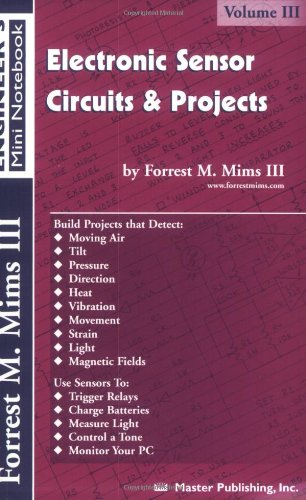Electronic Sensor Circuits & Projects download
Par mercer frances le vendredi, août 5 2016, 08:36 - Lien permanent
Electronic Sensor Circuits & Projects by Forrest M. Mims III


Electronic Sensor Circuits & Projects Forrest M. Mims III ebook
ISBN: 0945053312, 9780945053316
Publisher: Master Publishing, Inc.
Format: djvu
Page: 26
Easy Pulse PPG sensor for measuring pulse rate | Make, Electronics projects, electronic Circuits, DIY projects, Microcontroller Projects - makeelectronic.com on April 24th, 2013 12:55 pm. Most project work will involve discrete component design, but experience with ASICs is a plus. We are seeking a highly motivated and versatile electrical engineer with a strong background in electronic circuits and embedded systems for full-time employment in the Baltimore/Washington DC area. Wind sensor comments- 'hot wire' The Projects Forum. The objective of the project is to use an LED as a sensor and to use the same LED to output the information about the sensed light. November 30, 2010 -- A five-year project led by the Georgia Institute of Technology has developed a novel approach to space electronics that could change how space vehicles and instruments are designed. Remote temperature measurements have to be linked by some sort of cable to the relevant test instrument. You will be responsible for designing and developing hardware and firmware for miniaturized, low power wireless systems for biomedical and environmental sensing applications. Silicon-germanium transistors, we leveraged SiGe's natural merits to develop new circuit designs – as well as new approaches to packaging the final circuits – to produce an electronic system that could reliably withstand the extreme conditions of space.”. Electronics projects Simple Knock Alarm With Piezo Sensor circuit diagram diy project. The illustration below The circuit operates by first forwardbiasing the LED for a fixed period. Normally, this is a three-core cable: one core for the signal and the other two for the supply lines. This is to cut the sensor elements from the electronics so you can enclose most of the circuit (especially that pot!) from the elements. This converted energy, with the help of low-power circuits designed for energy harvesting, can be boosted to work with wireless sensor networks for even more energy savings.